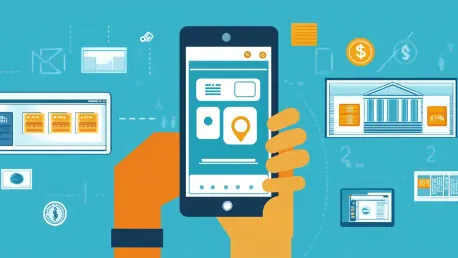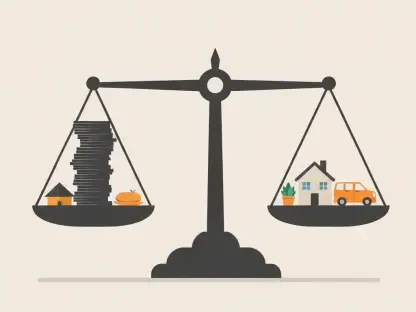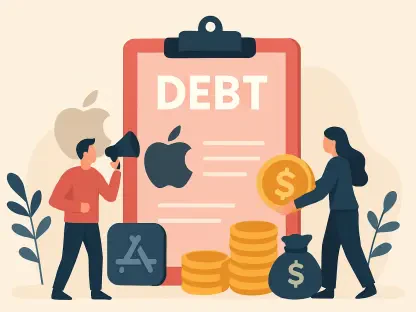As fintech continues to thrive, particularly among younger generations with a burgeoning interest in the stock market, mobile-first solutions are significantly reshaping how consumers engage with their finances. Mobile banking applications are spearheading a revolution within the traditional banking sector by providing an extensive overview of their growing popularity, numerous advantages, and the resulting transformation of the financial landscape. These app-based banking solutions engage users directly through smartphones, leading to unprecedented convenience, cost savings, and inclusivity that traditional banks struggle to match. In this article, we delve into the common themes, key points, and overarching trends that define this financial revolution.
Impact of Mobile Banking Apps on Traditional Banking
The rise of mobile banking applications has led to profound changes in the banking industry. These apps allow users to complete financial tasks in seconds, removing the necessity of physically visiting bank branches. In areas lacking convenient access to traditional banking structures, these apps become particularly valuable. This shift is exemplified by the popularity of apps like Chime and Cash App, which focus on providing flexibility, convenience, and easy access to financial services. According to recent reports, over 80% of surveyed consumers managed their finances via mobile devices at least once in the prior month, underscoring the widespread adoption of this technology.
Mobile banking apps have also introduced a new level of efficiency in financial transactions. Users can transfer money, pay bills, and even apply for loans without the need for lengthy paperwork or in-person meetings. This convenience has made mobile banking a preferred choice for many, especially those with busy lifestyles or limited access to traditional banking services. Furthermore, the integration of advanced security features in mobile banking apps has increased consumer confidence. Biometric authentication, encryption, and real-time fraud alerts ensure users’ financial information remains secure, addressing one of the primary concerns associated with digital banking.
Advantages of App-Based Banking
The primary allure of app-based banking lies in its user-friendly design. These apps contrast sharply with traditional banking systems, often laden with complex procedures and bureaucratic paperwork. Mobile banking applications feature intuitive interfaces, personalized dashboards, and real-time notifications, allowing users to automate essential financial tasks effortlessly. For instance, apps like NerdWallet offer built-in budgeting tools that automatically categorize expenses. Moreover, app-based banking often reduces or eliminates various fees due to lower operational costs. Many apps, such as Ally Bank, do not charge monthly maintenance fees or require minimum balances. Additionally, they offer benefits like interest-earning checking accounts and access to a vast network of fee-free ATMs. The inclusion of instant peer-to-peer payments, investment options, and loan services within a single application enhances convenience, affordability, and functionality, making these apps attractive as primary financial tools.
Another significant advantage is the ability to access financial services anytime and anywhere. This 24/7 availability ensures that users can manage their finances on their own schedule, without being restricted by traditional banking hours. The convenience of mobile banking apps has made them an essential tool for modern financial management. Users also benefit from regular updates and the incorporation of newer functionalities, which continually improve the user experience and introduce innovative ways to handle finances.
Impact on Underbanked Populations
Mobile banking profoundly impacts underbanked populations, offering them unprecedented access to financial services. By providing credit to underserved markets and promoting the widespread adoption of mobile solutions, these apps can help improve the economic status of diverse customer demographics. This inclusiveness makes financial services more accessible to those who previously lacked adequate banking opportunities. Mobile banking apps also offer educational resources to help users improve their financial literacy. Features such as spending analysis, savings goals, and investment advice empower users to make informed financial decisions. This support is particularly beneficial for underbanked populations who may not have had access to traditional financial education.
Additionally, mobile banking apps often provide lower-cost alternatives to traditional banking services. For example, they may offer lower fees for international money transfers or more competitive interest rates on loans. These cost savings can make a significant difference for underbanked individuals, helping them to build financial stability and achieve their financial goals. The convenience and affordability of mobile banking apps form a twin pillar that supports these communities, fostering greater financial inclusion and empowerment.
Digital Transformation of Traditional Banks
In response to the growing popularity of digital banking, traditional banks face increasing competition from their mobile counterparts. This competition drives a greater emphasis on technological innovation within conventional banking institutions. Banks are investing in artificial intelligence to enhance customer service, including tools for real-time fraud detection, personalized recommendations, and automated customer interactions to reduce costs and improve efficiency. Additionally, traditional financial institutions are forming partnerships with fintech companies to offer modern solutions that meet the evolving needs of their customers. By incorporating fintech services into their platforms, these banks can bridge the gap between their established systems and the fast-paced demands of app-based banking clients.
Traditional banks are also adopting digital-first strategies to remain competitive. This involves upgrading their infrastructure to support cloud-based systems and integrating mobile banking features into their existing services. By embracing digital transformation, traditional banks can offer a seamless and convenient banking experience that meets the expectations of today’s tech-savvy consumers. These steps are essential for banks to retain their competitive edge and cater to changing consumer behaviors, forging a path towards a more technologically advanced banking environment.
Hybrid Model of Banking
The future of banking is expected to be a hybrid model that integrates traditional and digital services. Traditional banks are investing heavily in digital-first strategies, which involve upgrading their infrastructure to support cloud-based systems and modern-day demand. This approach allows banks to offer convenient online and mobile banking while maintaining the reliability of long-established banking practices. The hybrid model aims to provide a custom-tailored service that incorporates innovative technology and customer-centric strategies. By bridging the gap between the old and the new, banks can meet customer demands for digital convenience while offering the depth and security of traditional banking services.
As regulatory frameworks evolve, they will seek to balance innovation with customer protection, ensuring a safe and inclusive banking environment. These regulations will likely adapt to accommodate advancements in digital banking technology while upholding rigorous standards for security and customer privacy. The hybrid model will drive banks to continuously innovate, harnessing the power of data analytics and artificial intelligence to better understand and cater to customer needs. This convergence of traditional banking strengths with agile, user-focused digital solutions promises a more inclusive, convenient, and innovative banking sector.
Future of Finance
As fintech gains momentum, especially among younger generations with a growing curiosity about the stock market, mobile-first solutions are radically changing how people manage their finances. Mobile banking apps are leading a revolution within the traditional banking sector, offering insights into their rising popularity, myriad advantages, and the consequent transformation of the financial landscape. By enabling direct engagement with users through smartphones, these app-based banking solutions provide unmatched convenience, significant cost savings, and remarkable inclusivity—areas where traditional banks often fall short. This article explores the prevalent themes, essential points, and overarching trends that characterize this financial upheaval. It also examines the challenges and prospects that lie ahead for both mobile banking and traditional financial institutions in adapting to this new paradigm. By doing so, we aim to shed light on how technology is redefining the banking experience.









